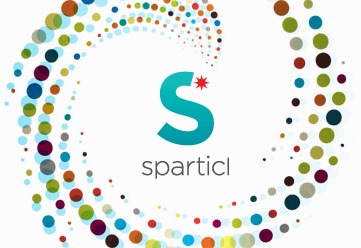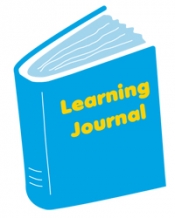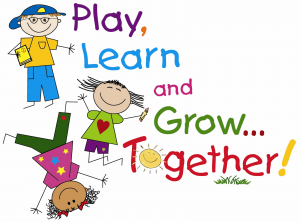Jan 8 2014
What did you do on your snow day?
What did you do on your snow day?
JANUARY 2014
JANUARY 2009
Jan 8 2014
What did you do on your snow day?
JANUARY 2014
JANUARY 2009
Dec 25 2013
…and a Happy New Year
I have the best job in the world working with some pretty amazing kids and their families. I’ve probably learned more from these people than I’ve taught. Thanks for enriching my life so much!
The Fall 2013 semester was an interesting one. My students put up with construction going on around them with things literally falling from the ceiling. For the first two months I had a class of only girls, so I got a glimpse of their world. All of my students are really creative and learn so fast. I remember finishing an entire chapter from the math book in just one day, and everyone got A’s on the test the following day! Through it all, we’ve all become better people, learning how to put others first and work as a team. I’m thankful for each of you! Enjoy your winter vacation.
Janis, you’ve done an amazing amount of personal growth in the past year and a half. You’ve definitely become a leader by setting a good example and working hard. Keep up the good work!!!
Isa, it’s a joy to be your teacher. You challenge me every day with your ideas and insights. Keep on being you!!!
Jason, I’m proud of how quickly you jumped into our class and how much effort you put in to everything you do. Even when things are really hard, you give it your best effort. Don’t ever stop doing that!!!
I had some time over break to post photos from this semester. You can find them under the Photos link on this website.
Oct 3 2013
I added a new online resource to the reference library on this website. Lots of cool stuff including some fun games. Click on the picture below to go to the site:

Sep 26 2013
Over the past two years of teaching 3rd/4th grade, I’ve tried to be flexible when it comes to snacking in the classroom. For many students, having something to munch on helps them focus better. I’ve come to the realization, however, that the benefits do not outweigh the challenges for this age group.
Specifically:
We’re going to start with a minimalist approach and say that students are allowed to have water bottles (with a lid) on their desk, otherwise no food is allowed inside the classroom at any time except for the list at the end of this document.
BREAKFAST: This is the most important meal of the day. Don’t skip it!!! Studies have shown that eating a balanced breakfast improves grades and concentration. Learn more here. A good breakfast for a child should contain a balance of protein, fat and carbohydrates to keep blood sugar levels steady for hours. Try some toast with peanut butter and a piece of fruit or cereal with milk and glass of 100 percent fruit juice. If you have time, make an omelet with cheese and some turkey bacon. Carbohydrate-only breakfasts such as toast, bagels, and cereal last for about two hours, then the energy drops. A proper breakfast should eliminate the need for snacking before lunch.
LUNCH: When you arrive at school, your lunch goes upstairs to the lunchroom right away. Your lunch should never come into the classroom. After lunch, leave your empty containers, etc. in the lunchroom and pick it up from there after school. This is what the older students do.
A good lunch is equally as important as a good breakfast to sustain your child’s energy in the second half of the day. A lunch can be inexpensive and fun while being nutritious and providing enough energy for the day. Another excellent website, webmd.com, offers some excellent and specific options for school lunches.
Well planned breakfasts and lunches should eliminate 95% of the need for snacking since a well balanced meal provides lasting and stable energy. Below is a list of foods I’ll approve. Nothing else is allowed unless I clear it first.
If you want to add anything to this list, please check with me first. Here are some more snack ideas for after school when the kids get home.
Sep 24 2013
Today we started using Learning Journals. The concept is first to give students an opportunity to process and put their most recent learning into words. Second, it helps me as a teacher have a better idea of their understanding of what I taught and to have a record of what they’ve learned.

(1) September 24th – Math
(2) Today I learned how to round. If the number is 5 or greater, the place value you are rounding goes up. If it is less than 5, the number you are rounding stays the same.
(3) The number line was helpful to know which direction to go.
(4) Next time I want to see if we can round to the billions place.
Aug 29 2013
Your assignment is to research an Indiana city, town, or state park and make a tri-fold brochure. This assignment is due at the end of class on Tuesday, September 3rd.
Here is what you need to have on each of your pages:
| SIDE 1: Name / Title of the place with a picture, logo, or both
|
| SIDE 2:Why should people visit your place?
|
| SIDE 3:Top 5 facts about your place.
|
| SIDE 4: History of your place
|
| SIDE 5: You can put what you want here. You might want to talk about a special feature of your place.
|
| SIDE 6: Address, phone number, web site, and map
|
|
HIGH GRADE |
LOW GRADE |
| Every page is well organized and easy to read. | Pages aren’t organized, and they are hard to read. |
| Your information is accurate, and you write down which web sites you got your information from. | You made up facts, and you didn’t write down where you found your facts. |
| Everything is spelled correctly. | There are a lot of spelling mistakes. |
| The brochure looks good and neat. | The brochure looks sloppy. |
Each item is worth 10% of your total grade of up to 100%
Aug 26 2013
Library cards: Our class will be visiting the Indianapolis Public Library throughout the school year. If your child has a current library card, please bring it in this week so I can make a copy of it. If you don’t have a card, please visit a local branch and fill out an application. The nearest one to our school is the Garfield Park Branch at 2502 Shelby Street, about a mile East of our school. The application requires a parent to be present.
Following up with lessons at home: It is beneficial when parents ask students what they studied in school on a regular basis. It helps reinforce what we’ve learned, and it gives you a better idea of what your child is learning. Here is a quick overview of what we’re going to learn in 2013-14:
English/Spelling/Reading: We are going to focus on the theme of nonfiction literature this year. This will include biographies, autobiographies, poetry, and other nonfiction themes. We will begin a weekly spelling list next week after I find an appropriate level. Look for the list in this week’s Friday Folder. It will be helpful if you help your child study the words throughout the week. We will also be working on grammar and writing skills.
Social Studies: We are studying Indiana History this year. Unit 1 covers geography and natural history of our state. Unit 2 covers Native Americans and the first Europeans to arrive. Unit 3 covers initial statehood through the 1850’s. Unit 4 is mainly about the Civil War. Unit 5 covers post Civil War through the Vietnam era. Unit 6 covers Indiana government, citizenship, and modern times.
Math: We will be mainly covering the 3rd grade math standards and possibly some 4th grade math standards this year. Both students tested around that level at the beginning of the year. It would be helpful to work with your child to review addition and subtraction up to 100, and multiplication up to 10. We’ll be working on this in the classroom too.
Science: This semester we will be covering magnetism, electricity, light, and sound. Next semester we will be covering astronomy.
Home visits: Several years ago I committed to take the time to visit each of my students at home early in the year. The objective is to spend quality time with each of my students and their families for one afternoon/evening. It gives me an opportunity to meet with parents and share my teaching philosophies as well as hear from them about what goals they have for their child this school year. It also lets my students know each one of them is special enough to get an entire evening focused on them. Of all the years I’ve done this, I’ve seen remarkable improvements in communication, student attitudes, and enthusiasm for school. When I was in the sixth grade, my teacher visited my home, and I remember it fondly to this day. In the past I’ve stayed for short visits of 30 minutes through spending an entire evening with dinner, games, and long chats about whatever seemed interesting. It’s totally up to you. Students always love showing me their rooms, pets, and projects. These visits aren’t mandatory, but they are beneficial in huge ways. After school usually works for me except for Wednesdays. Please let me know a date and time that works for you.
Email: I sent you an email today. Please reply to it so I know that they are getting through. If you don’t see the email, please let me know.
Jun 14 2013

Congratulations, you found the hidden message!
When I think of the word, “connections”, the first thing that comes to my mind is a spider web. If you look at it closely, you’ll see that there are hundreds, maybe even thousands of connections. Perhaps the most interesting thing is that no matter where you go on the web, it’s impossible to not affect every other connection on the web too. The next time you find a spider web, see if you can jiggle one part of the web without making any other part move. I bet you can’t.

Our lives are like the connections on the spider’s web. Each of us is connected in countless ways to each other, our environment, and even people from ancient history. Did one of your great, great, great grandparents arrive with Christopher Columbus on the Mayflower? Is one of your ancestors someone famous from history like a president, king, inventor, or great warrior? Talk to your parents and grandparents. They probably know.
We will think about our theme in as many ways as we can throughout the year. One of the ways you can help is to share your very own “I Spy a CONNECTION” with the class. Raise your hand and tell us what you came up with.
The main questions I want you to consider are:

Apr 5 2013
Differentiated learning is at the core of how I teach. Not only are my students in several different grade levels, each works at a different pace. Because our classroom is small, I can give each child more attention than they would normally get in an overcrowded public school. I differentiate in two main ways:
In order to have prior assessment data for correct placement, we will be doing some “low stakes testing” the first week or two of school to see where each student is academically based on state standards. It’s been my experience that gifted kids excel in some areas and have gaps in others, so it’s not as simple as assigning a grade level. Some preliminary testing will give us a clear picture of what needs to be taught.
The strategy for individualizing assignments will vary for each class. If the majority of the class tests in the same ballpark, I’ll keep everyone together. If a small group of students needs the same skill, I’ll do ability grouping. If an individual student or two lacks a specific skill, I can work with them while the other students are engaged in an independent activity, or I may assign additional assignments as homework.
My goal is to fill in all the knowledge holes during the 3rd and 4th grade years so that when they reach 5th grade they will all be on the same page.